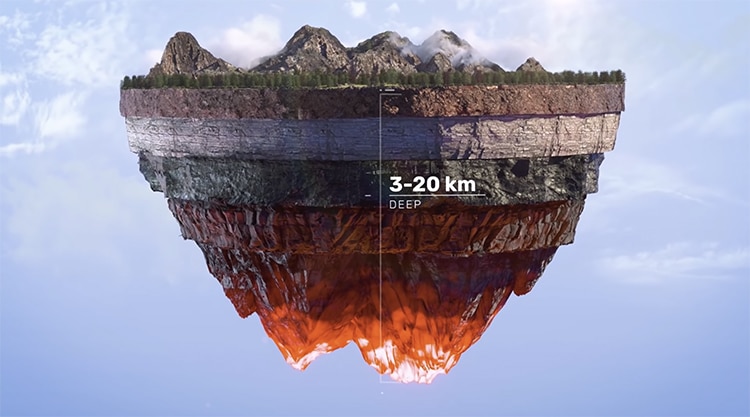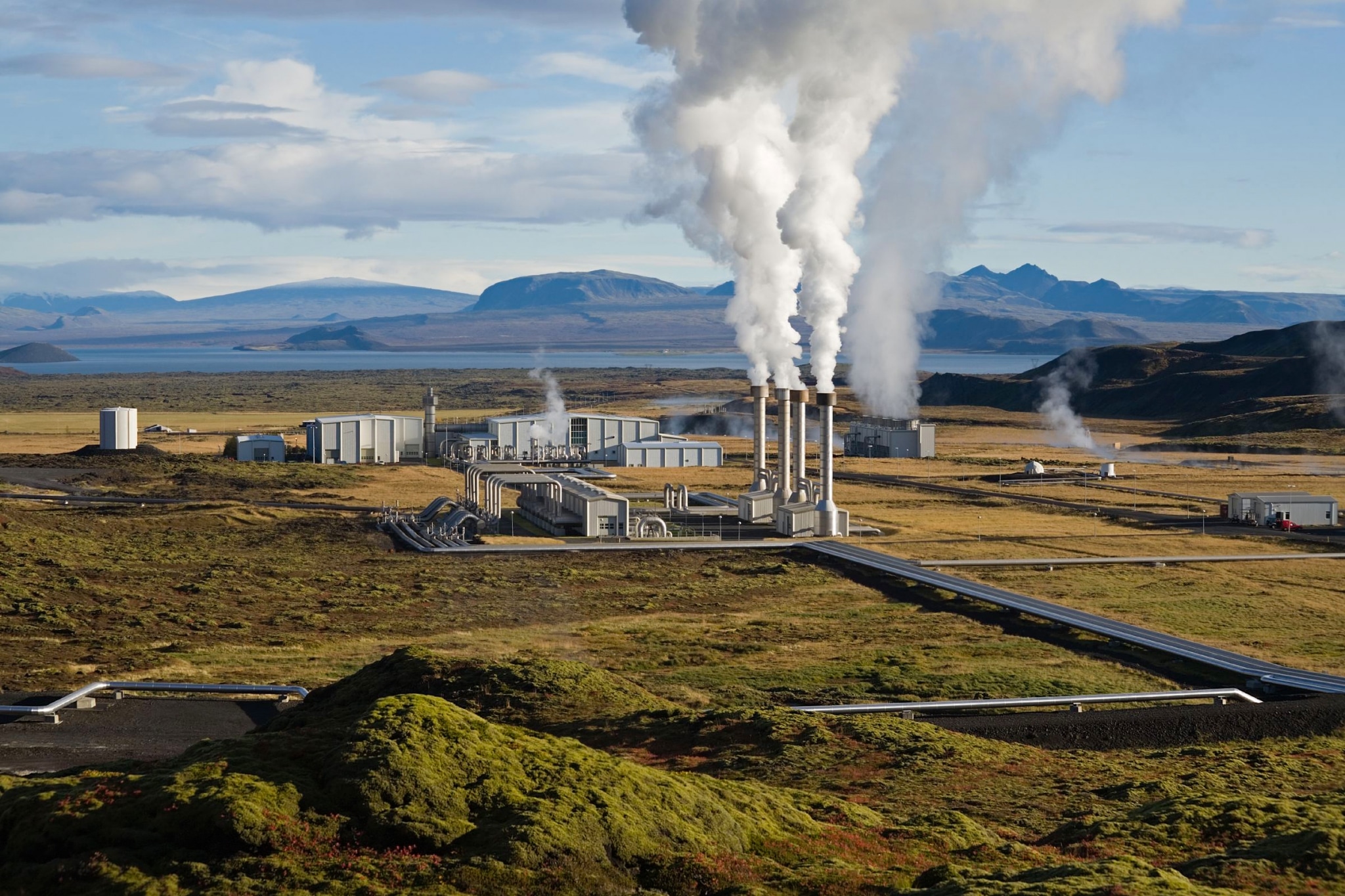
Quaise plans to dig deep into the Earth with new technology to harness sustainable geothermal energy. (Photo: Screenshot from video by Quaise)
The importance of a global transition to sustainable energy is widely discussed in political and scientific communities. Wind, solar, and nuclear power are seen as solutions to the rapidly impending climate crisis. However, one promising source of sustainable energy remains largely untapped and under-appreciated: geothermal energy. Geothermal energy comes from within the Earth, where slow radioactive decay produces a never-ending supply of powerful heat. To access this clean resource, a company called Quaise plans to dig deeper than ever before into the Earth’s crust.
On the surface of Earth, geothermal heat usually appears in areas with hot springs or geysers. Delving down into the ground allows power companies to tap into this heat, which is then used to create steam-powered electricity. Less than 1% of the globe’s energy comes from geothermal sources, but the MIT spinoff company Quaise believes geothermal energy could provide 8.3% of global energy and power 40 countries fully. They plan to overcome one of the largest barriers to geothermal energy—the depth which must be dug to access the heat—with revolutionary new technology.
Quaise has raised $63 million in start-up cash to proceed with the development of their technology. Developed by researchers at MIT’s Plasma Science and Fusion Center, the hybrid deep drilling technology will circumvent some of the classic struggles of drilling. So far, man has only drilled about 7.5 miles down at Russia’s Kola Superdeep Borehole and the Al Shaheen oil well in Qatar. Metal bits are unable to withstand the extreme heat of approximately 930°F found at 12 miles beneath the surface, so to achieve their record-setting goal the team will burn rather than drill.
A gyrotron is a vacuum tube that creates electromagnetic radiation by shaking electrons inside a magnetic field. “Our gyrotron-powered drilling platform vaporizes boreholes through rock and provides access to deep geothermal heat without complex downhole equipment,” reads Quaise’s website. Essentially, the technology burns a hole through very hot, dense rock. Water can then be pumped downwards, where it will quickly vaporize into steam (more technically, super-critically heated water). This steam powers the electrical plant, which in turn distributes power to subscribers. While geothermal energy can have environmental side effects, it is substantially better for the planet than coal and oil-based energy.
Quaise hopes its drilling techniques will be an equitable solution to the world’s energy problems. Unlike oil or gas, all countries sit upon geothermal reserves—they just have to be able to dig down far enough. The company hopes to begin working on prototypes soon, with the goal of transforming coal-fueled power stations into steam-powered geothermal ones by 2028. Each shaft, once drilled, is expected to last up to a century. CEO and co-founder Carlos Araque assured New Atlas that no Earth-shattering calamities are likely to result. The Earth already leaches heat, so drilling will not release more into the environment. He also mentions drilling is different than fracking for natural gas, which has its own concerns. When asked about disaster movies, he replied,”This is precisely why we need to do this: to avoid a disaster.”
MIT spinoff Quaise has raised millions to develop and pioneer a new electromagnetic drilling technology which will go deeper into the Earth than any technology has before.

A geothermal plant releasing steam in Iceland. (Photo: Wikimedia Commons, Public domain)
By drilling down 12 miles into the crust of the planet, Quaise hopes to harness the power of sustainable geothermal heat which our planet naturally produces.
Quaise: Website
h/t: [Vice, Science Alert]
Related Articles:
Ecuador Expands the Galápagos Marine Reserve by More Than 23,000 Square Miles
Germany Accelerates Its Clean Energy Goals After Freezing Russian Pipeline Plans
Global Survey Discovers 75% of People Support Single-Use Plastic Bans
Turkish Man Plants 30 Million Saplings and Creates Forest on Once-Barren Land
